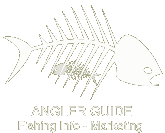 |  |
|
Navigation - Business - Great Lakes - Great Plains - Northeast - Northwest - Rocky Mountains - Southeast - Southwest - Technology - Trophy Catches
|
 Wayne Gustaveson, the Utah Division of Wildlife Resources' lead fisheries biologist at Lake Powell, says 2011 could be the "Year of the Angler" at the lake. "Normally, hungry fish are easier to catch," he says. Gustaveson provides the following tips to help you catch fish at one of Utah's best and most popular fishing waters: Striped bass Gustaveson says threadfin shad—the main food source for stripers in the lake—are low in number this year. In the past, low numbers of threadfin shad meant fast action for anglers as hungry striped bass aggressively went after their baits and lures. But the appearance of gizzard shad—which have established themselves across the lake—has changed that scenario a bit. "We have a lot of large gizzard shad in the lake right now," Gustaveson says. "They'll produce more young as the water warms in the spring." Gustaveson says some areas of the lake will have good numbers of shad. In other spots, the shad will be scarce and the stripers hungry. Areas that have good shad populations are keeping some striper schools near the backs of the canyons where the shad are. This is slowing the wholesale movement of stripers to the main channel. In areas that have fewer shad, the stripers are hanging out along canyon walls. Bait fishing should be good for these hungry fish:
As spring progresses, stripers will leave the canyons and congregate in large schools in the main channel. These schools should respond readily to bait and chumming. "Hot spots will become apparent as schools leave the backs of the canyons and move towards the main channel," he says.
Gustaveson says adult stripers have a tough time when there isn't much food to eat. "Younger, faster, stronger juvenile stripers are better at seeking out the limited number of shad that are available," he says. "Young stripers should grow quickly while old adults will be widely harvested in the spring," he says. "By the time spring is over, adult stripers will have faded out of the picture for this year." Largemouth bass and crappie If you enjoy fishing for largemouth bass or crappie, 2011 is the year to fish at Lake Powell. Gustaveson says the lake level has been fluctuating within a narrow zone that has good, brushy habitat. That habitat has increased largemouth bass and crappie populations to numbers not seen since the "good old days." "It appears that the lake level in 2011 will again allow bass and crappie to share submerged brush habitat zones with the shad and the sunfish that the bass and crappie prey on," he says. To find largemouth bass or crappie, look for brush-ringed shallows at the back and along the shallow edges of many of the canyons. Gustaveson says good numbers of crappie are found in thick brush at remote locations near Hite, the upper San Juan River arm and the Escalante. To catch crappie, pull your boat into the brushy thickets. Then fish crappie jigs straight up and down in the brush. Gustaveson says largemouth bass will have one more banner year at the lake before the brush gets old and decays. "This may be the last great year for largemouth bass at Lake Powell," he says. "Make sure you visit the reservoir and take advantage of the opportunity." Smallmouth bass and walleye If you're after smallmouth bass or walleye, fish in rocky areas that don't have much brush. Gustaveson says you can find smallmouth along most of the rocky shoreline at the lake. "But the average size of a smallmouth bass will be smaller this year because most of the forage in the lake is hiding in the brush zone," he says. "That's an area smallmouth bass don't utilize." Gustaveson says walleye are larger in size and more numerous in the lake upstream from Bullfrog to Hite. Walleye are easiest to catch in May, after they've completed their spawn and the warming water temperature increases their metabolism. "When those things happen," he says, "walleye in the lake will be active all day long." Channel catfish Channel catfish are abundant and are readily caught all summer long. Techniques for various areas A variety of fish will be available this year along most of the lake's shoreline:
Learn more Gustaveson says 2011 will be remembered for the wide variety of fish caught at myriad places on Lake Powell, using a broad array of tackle and techniques.
Comments
«Back | News Home
| |||||||||||||||||||||||||||||||||||